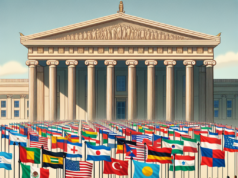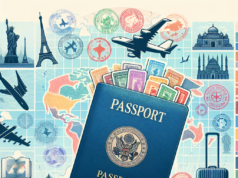
In recent years, immigration policies across the globe have undergone significant transformations, prompting a reevaluation of national borders and the movement of people. These changes are not merely administrative; they reflect deeper societal shifts, geopolitical tensions, and evolving economic landscapes. As nations grapple with the complexities of migration, the implications of these policy shifts resonate far beyond their borders, affecting millions of lives and the global community at large. This article delves into the historical context of immigration policies, the factors driving recent changes, and the multifaceted impacts of these developments.
Understanding the Historical Context of Immigration Policies and Their Evolution
Immigration policies have long been a reflection of a nation’s values, economic needs, and social dynamics. Historically, many countries adopted open-door policies during periods of labor shortages or economic expansion, welcoming immigrants as vital contributors to growth. However, the late 20th century saw a shift towards more restrictive measures, often fueled by economic downturns, security concerns, and rising nationalism. The post-9/11 era, in particular, marked a significant turning point, as countries tightened their borders in response to perceived threats. This historical backdrop is essential for understanding the current wave of policy changes, which are often framed as necessary responses to contemporary challenges, including globalization, climate change, and demographic shifts.
Key Factors Driving Recent Changes in Immigration Policies Worldwide
Several interrelated factors are driving the recent changes in immigration policies worldwide. Economic pressures, such as labor shortages in key industries, have prompted some nations to adopt more lenient immigration measures to attract skilled workers. Conversely, rising anti-immigrant sentiment, fueled by economic anxieties and cultural fears, has led others to implement stricter controls. Additionally, geopolitical tensions, such as conflicts and humanitarian crises, have forced countries to reassess their immigration frameworks, balancing the need for security with the obligation to provide refuge. The COVID-19 pandemic further complicated these dynamics, as nations grappled with public health concerns while also facing the economic fallout of border closures.
Analyzing the Impact of New Immigration Policies on Global Migration Trends
The recent shifts in immigration policies are reshaping global migration trends in profound ways. Countries that have adopted more welcoming stances are witnessing an influx of skilled labor and diverse populations, which can stimulate economic growth and cultural exchange. Conversely, nations that have tightened their borders are experiencing a decline in immigration, which may exacerbate labor shortages and hinder economic recovery. Moreover, the rise of irregular migration, driven by desperation and the search for better opportunities, poses significant challenges for governments attempting to manage their borders effectively. As policies evolve, the patterns of migration are likely to continue shifting, with implications for both sending and receiving countries.
The Role of Technology in Shaping Modern Immigration Enforcement Strategies
Technology is playing an increasingly pivotal role in modern immigration enforcement strategies, transforming how countries monitor and manage their borders. Advanced surveillance systems, biometric identification, and data analytics are being employed to enhance border security and streamline immigration processes. While these technologies can improve efficiency and safety, they also raise ethical concerns regarding privacy and civil liberties. The use of artificial intelligence in decision-making processes, for instance, has sparked debates about bias and accountability. As nations invest in technological solutions to address immigration challenges, the balance between security and individual rights remains a contentious issue that requires careful consideration.
Humanitarian Implications: Balancing Security and Compassion in Immigration Reform
The humanitarian implications of immigration policy changes are profound, as nations strive to balance security concerns with the need for compassion and support for vulnerable populations. The rise in restrictive policies has often led to increased suffering for asylum seekers and refugees, who may find themselves trapped in dangerous situations or denied access to essential services. Advocates argue that a more humane approach to immigration is not only a moral imperative but also beneficial for society as a whole, fostering integration and social cohesion. As countries navigate the complexities of immigration reform, the challenge lies in crafting policies that uphold human rights while addressing legitimate security concerns.
Future Outlook: Predicting the Long-Term Effects of Current Immigration Policy Shifts
Looking ahead, the long-term effects of current immigration policy shifts are likely to be significant and multifaceted. As nations continue to grapple with the consequences of globalization, climate change, and demographic shifts, the demand for flexible and adaptive immigration frameworks will grow. Countries that embrace inclusive policies may benefit from enhanced economic resilience and cultural diversity, while those that remain rigid may face social unrest and economic stagnation. Furthermore, the ongoing evolution of technology will continue to shape immigration enforcement and management, necessitating ongoing dialogue about ethical considerations and human rights. Ultimately, the future of immigration policy will depend on the ability of nations to balance security, economic needs, and humanitarian obligations in an increasingly interconnected world.
The recent shifts in immigration policies represent a critical juncture in the ongoing dialogue about borders, migration, and national identity. As countries navigate the complexities of these changes, the implications for individuals and societies are profound. Understanding the historical context, key driving factors, and potential future outcomes is essential for fostering informed discussions about immigration in a rapidly changing world. As we move forward, the challenge will be to create policies that not only address security concerns but also uphold the values of compassion and inclusivity that define our shared humanity.



























